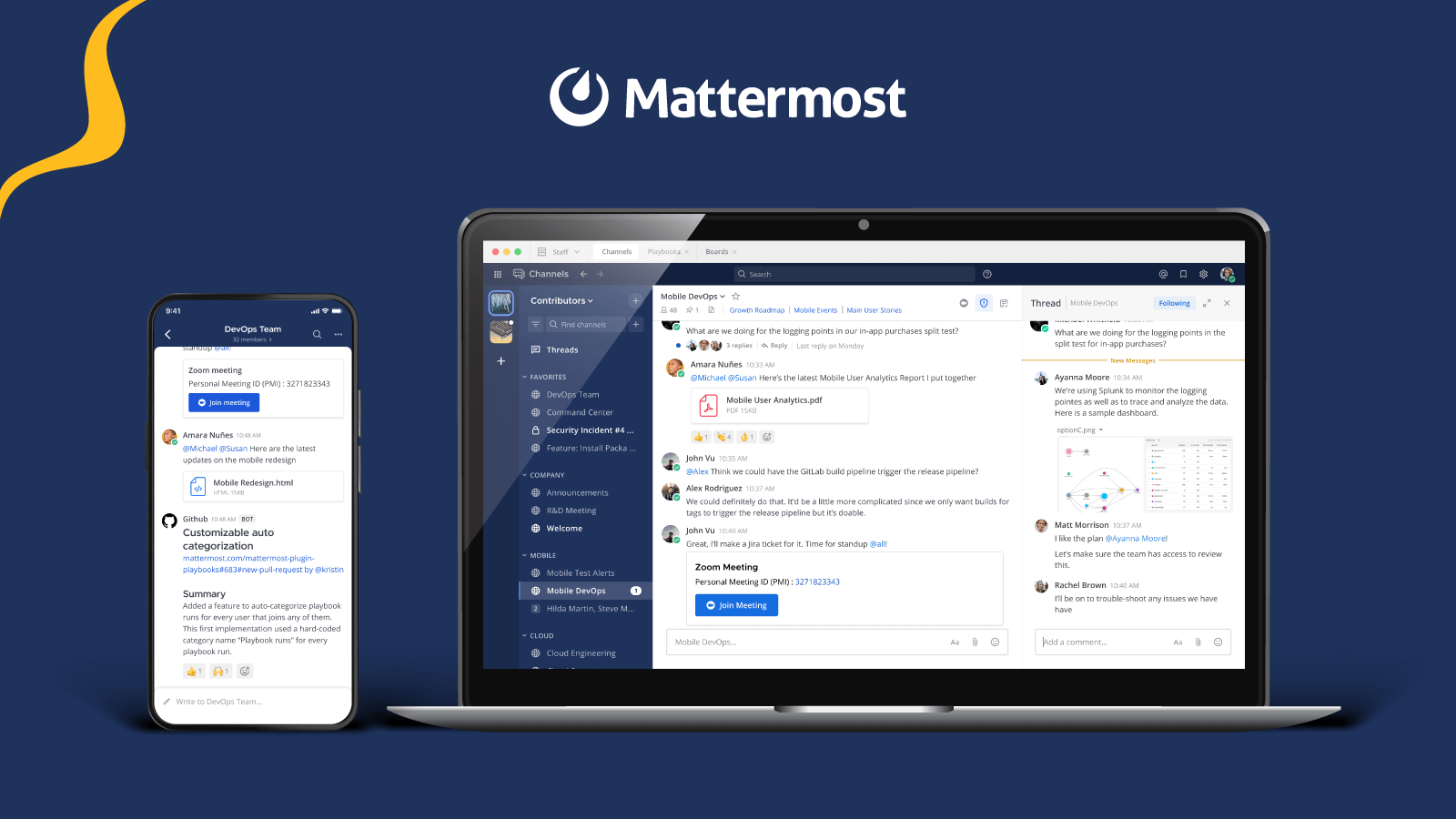
Mattermost Pro Tips: Using emojis to improve team collaboration
Looking to build a more engaged, more productive, happier team? Find out how technical and operational teams can use emojis to collaborate more effectively.
When technical and operational teams work together in the same physical location, it’s easy for employees to communicate and understand each other because things like body language, facial expressions, tone, and enunciation provide additional context to the words that are being said.
Unfortunately, such context clues don’t inherently exist in text-based communication; it’s not uncommon for two different team members to read the same sentence and take away different meanings.
Enter emojis, which are increasingly popular characters that render as small images on smartphones and applications. Today, there are emojis for pretty much everything — including zombies 🧟, fistbumps 👊, and rocketships 🚀.
To many workers, emojis might seem to be a novel communication tool that’s fun to use. In practice, however, emojis can have a tremendous impact on team productivity. Not only can emojis help employees communicate more precisely via text and collaborate more effectively, they can also help strengthen company culture and connect globally distributed teams.
As an open source operational hub for technical teams, Mattermost supports emojis and emoji reactions. Customers can also upload custom emojis in Mattermost to better reflect their brand and unique culture while making work more enjoyable.
In this post, we’ll examine some of the ways you can use emojis to accomplish more every day.
- Communicate with precision
- Acknowledge you’ve seen a message
- Track statuses
- Build a stronger culture
- Overcome language barriers
Using emojis to communicate with precision
Consider the following question: Why did you do that? Now, imagine asking this question with a soft, inquisitive tone that ends with an upward inflection and again with a loud, incredulous, abrasive tone. In both instances, you’re using the same words while conveying an entirely different meaning. This first version implies genuine curiosity; the second implies anger.
This same idea holds true in any conversation — including workplace conversations that take place on messaging platforms. When remote teams communicate using text, conversations often lack the nuances of in-person conversations. By adding emojis to text, workers can help their colleagues understand the intended tone of their messages while reducing potential misunderstandings and misinterpretations.
Imagine a manager asks an employee to do something, and that employee drops everything their working on to take care of the new task. After turning it around quickly, the manager responds as such:
- Thanks for your help!
Sure, that’s a nice thing to say. But does the manager really mean it? How can the employee know?
This is where emojis can be particularly helpful. It might not be a massive difference, but tacking on a few extra emojis at the end of the same sentence changes its meaning by adding a deeper sense of gratitude:
- Thanks for your help! 🙏🙌💪
Here’s another example:
- I’m so excited about this project!
- I’m so excited about this project! 💃🎉🚀
While someone reading the first sentence might wonder whether their colleague is being sarcastic, the second sentence clearly demonstrates the individual’s level of excitement.
Using emojis to acknowledge you’ve seen a message
Remote teams often struggle with communication overload. Just because someone posts a message doesn’t mean that everyone on the team needs to respond to it — and trigger additional notifications for a teammate who’s already busy enough as it is.
This is another use case where emojis can save the day. Rather than commenting on posts that are meant to broadcast information, use an emoji to acknowledge you’ve seen a message. This way, the author of the post knows the rest of the team has seen the message, the team doesn’t have to spend time writing different variations of “Got it, thanks!”, and no notifications are triggered.

Using emojis to track statuses and decisions
At Mattermost, we track mentions on platforms like Twitter, LinkedIn, HackerNews, and YouTube and use these emojis to highlight decisions about whether to respond or act:
- ✅ read, no action
- 🔼 upvoted
- 💬 responded
- ❌ don’t engage
How might your team use emojis for the same purpose?

Here’s another example to get you thinking in the right direction: A Belgian nonprofit organization used custom emojis on Mattermost for contact tracing during the COVID-19 pandemic. Using five different emojis — each representing a different member of the team — the contact tracers were able to easily tell one another who was working on which case. Being able to determine, at a glance, which individuals were handling each case was critical as infection rates soared.
Using emojis to build a stronger culture
Emojis can help companies build strong cultures by adding an element of creativity, expressiveness, and emotional connection to their text-based communication — a bit of personality if you will. Not only can emojis help employees express the emotional context and tone behind their words, but they also encourage inclusivity and camaraderie by transcending language barriers.
Emojis are also fun to use. Teams can use emojis to inject lightheartedness and humor into conversations, lightening the mood and creating a positive, friendly atmosphere. At the same time, emojis can increase engagement and participation by encouraging more employees to react to messages, which strengthens team dynamics.
At Mattermost, we use tons of emojis for this very purpose. We’ve also uploaded a slew of custom emojis to our own Mattermost instance in an attempt to ensure our colleagues always have the most appropriate emoji for any circumstance.

Using emojis to overcome language barriers
Emojis can help organizations overcome language barriers — something that’s particularly useful for globally distributed companies. Many emojis express a universal visual language; everyone knows that this emoji 😀 means happy and this one 😞 means sad.
Additionally, emojis also help teams overcome language barriers by providing the emotional context to text to prevent misinterpretations and misunderstandings. If you’re joking around, you might tack on this emoji 😆 to the end of your message. At the same time, emojis can also help simplify complex ideas into single symbols. Again, we all know the difference between 👍 and 👎. While words and expressions may change from one language to the next, many emojis transcend all languages; a dog is a 🐕 and money is 💰.
Ultimately, emojis help create a more inclusive atmosphere for all employees by alleviating any language-related insecurities. It’s an easy way to create a sense of connection and rapport among all team members, regardless of the native language they speak.
Ready to pick up more Mattermost Pro Tips?
Emojis are fun to use, but they’re so much more than that. From decluttering notifications and broadcasting messages you know have been received to tracking decisions and building a more inclusive, more engaged culture, there’s a lot to like about emojis.
Now that you have a better understanding of some of the ways you can use emojis in Mattermost, it’s time to continue your learning and pick up some additional pro tips. Here are some items you might want to check out:



